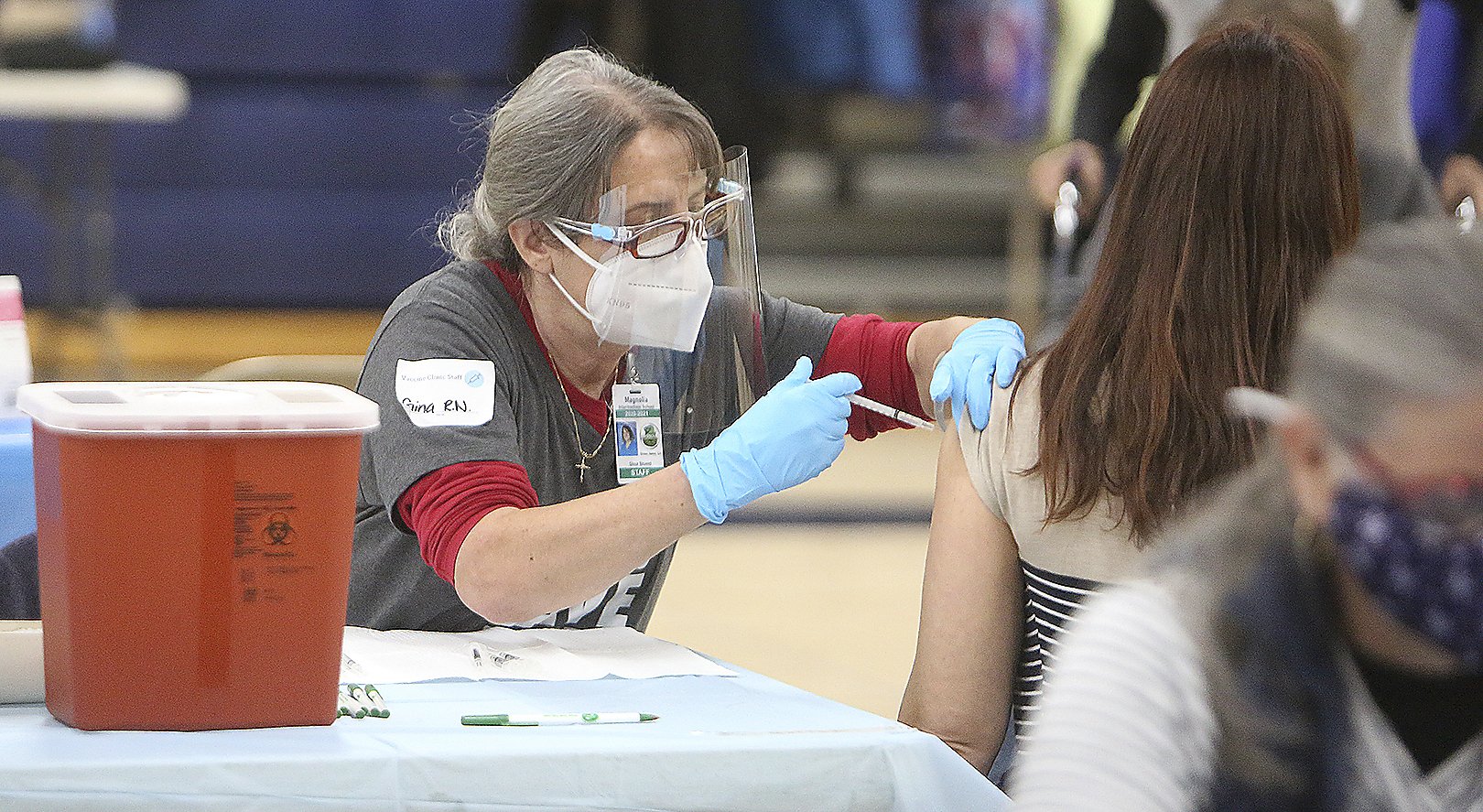Even as California approached the worrying milestone of 40,000 COVID-19 deaths, signs of hope continued to emerge.
Case rates, positive test rates and hospitalizations continued to drop or remain across the state on Friday. In the past seven days, the state has averaged 22,200 cases a day, almost half the number two weeks ago.
Across the country, hospitalizations due to COVID-19 have fallen to the lowest level since 7 December.
“We are clearly on a slope,” said Dr. George Rutherford, an infectious disease specialist at UCSF, speaking during a forum organized by the school on Thursday.
Despite promising trends, Santa Clara County has reached a bleak milestone with more than 100,000 cumulative COVID-19 cases and more than 1,300 deaths since the first Bay Area disease was discovered on January 31 in a Santa Clara resident. who flew from Wuhan, China, a week before.
Deaths, which remain a slow indicator of where the pandemic is heading, have remained high.
Across California, more than a third of deaths across the pandemic were reported in January – and the 13,594 deaths recorded across the state in January are double the 6,772 reported in December.
“I think it’s plausible that the virus has done what it can,” said Shane Crotty, a scientist at the La Jolla Institute for Immunology, at the UCSF forum.
More doses of the vaccine are on the way, although much more slowly than health officials would like, as the federal government and the state act to resolve distribution problems.
California says that nearly two-thirds of the doses of vaccines shipped have been administered. Some providers have withheld doses for the second injection, accounting for part of the third not yet administered.
“With vaccinations, we hope to see an end to this pandemic soon,” said Dr. Marty Fenstersheib, testing and vaccine officer for COVID-19 in Santa Clara County, during a news conference on Friday.
At least three more vaccine contenders are likely to be authorized for use in the United States this summer, including products from AstraZeneca, Novavax and Johnson & Johnson, said Rutherford.
Johnson & Johnson announced on Friday that its single-dose coronavirus vaccine was 66% effective in testing. The company is seeking FDA emergency use authorization.
European regulators also approved AstraZeneca’s COVID-19 vaccine for people over 18 on Friday, after it demonstrated about 60% effectiveness in testing.
Both vaccines are cheaper and easier to store than the vaccines currently available from Pfizer and Moderna, but are well below the 94-95% efficacy rate of these two vaccines, which are already approved for use in the U.S.
Novavax Inc. said on Thursday that its vaccine COVID-19 appears to be 89% effective based on the first findings of a British study and that it also appears to work – albeit not so well – against new mutant versions of the virus circulating in that country. and South Africa.
Variants remain a major question mark in the pandemic.
At UCSF, researchers are still analyzing data for a variant of the virus discovered in the state in December to determine whether it is more infectious than the common virus. They also hope to know whether the currently authorized vaccines will be effective against him and hope to have more information next week.
A highly transmissible coronavirus variant first identified in South Africa was detected in South Carolina on Thursday – the first time it was found in the United States – in two people with no travel history, indicating that it is spreading in the community .
Dr. Rochelle Walensky, head of the Centers for Disease Control and Prevention, said that Americans should assume that variants are widespread in the country, in addition to the few cases identified.
“I believe we should treat each case as if it were a variant during the pandemic now,” said Walensky during a coronavirus meeting at the White House on Friday.
Dr. Anthony Fauci, the government’s leading infectious disease expert, agrees with that sentiment, saying the United States needs to prepare for the emergence and increasing spread of coronavirus mutations. This includes variants first identified in the UK and Brazil.
“This is an alert for all of us,” said Fauci. “We have to be agile to adjust promptly to make versions of the vaccine that are specifically targeted to any mutation that is actually present at a given time.”
Aidin Vaziri is a writer for the San Francisco Chronicle. Email: [email protected]





